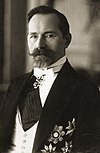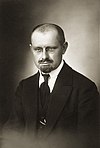
Aleksandras Stulginskis was the second President of Lithuania (1920–1926). Stulginskis was also acting President of Lithuania for a few hours later in 1926, following a military coup that was led by his predecessor, President Antanas Smetona, and which had brought down Stulginskis's successor, Kazys Grinius. The coup returned Smetona to office after Stulginskis's brief formal assumption of the Presidency.
Lietuvos žinios was a daily newspaper in Lithuania. Established in Vilnius in 1909, it was a liberal newspaper representing the Lithuanian Democratic Party. Even though its publication was interrupted by World War I and Soviet occupation of Lithuania, Lietuvos žinios billed itself as the oldest newspaper in Lithuania.
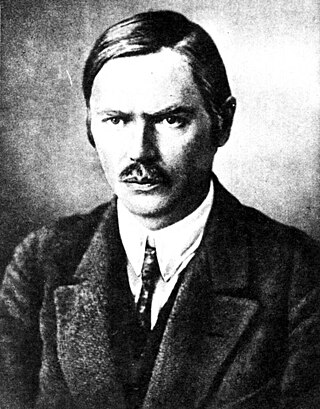
Steponas Kairys was a Lithuanian engineer, nationalist, and social democrat. He was among the 20 men to sign the Act of Independence of Lithuania on 16 February 1918.
In the history of Lithuania, the Council of Lithuania, after July 11, 1918, the State Council of Lithuania was convened at the Vilnius Conference that took place between 18 and 23 September 1917. The twenty men who composed the council at first were of different ages, social status, professions, and political affiliations. The council was granted the executive authority of the Lithuanian people and was entrusted to establish an independent Lithuanian state. On 16 February 1918, the members of the council signed the Act of Independence of Lithuania and declared Lithuania an independent state based on democratic principles. 16 February is celebrated as Lithuania's State Restoration Day. The council managed to establish the proclamation of independence despite the presence of German troops in the country until the autumn of 1918. By the spring of 1919, the council had almost doubled in size. The council continued its efforts until the Constituent Assembly of Lithuania first met on 15 May 1920.
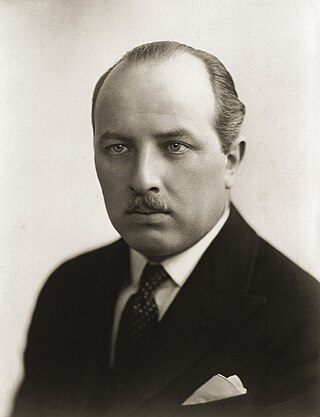
Kazys Bizauskas was a Lithuanian statesman, diplomat, author, and one of the twenty signatories of the Act of Independence of Lithuania.
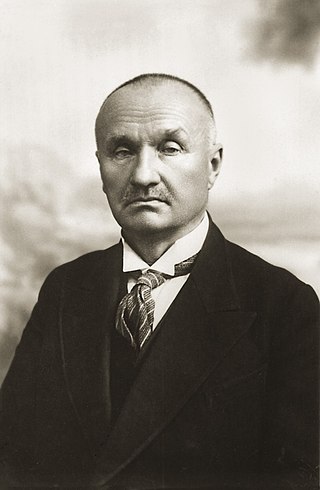
Jonas Smilgevičius was a Lithuanian economist and politician; he was one of the twenty signatories to the Act of Independence of Lithuania.
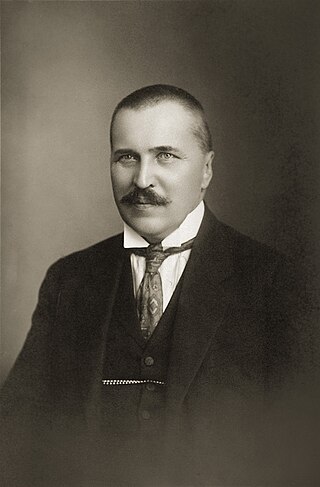
Jonas Vileišis was a Lithuanian lawyer, politician, and diplomat.

Kazimieras Steponas Šaulys was a Lithuanian Roman Catholic priest, theologian, and one of the twenty signatories to the Act of Independence of Lithuania.

Vaclovas Biržiška was a Lithuanian attorney, bibliographer, and educator.

In the history of Lithuania, the Vilnius Conference or Vilnius National Conference met on 18–22 September 1917, and began the process of establishing a Lithuanian state based on ethnic identity and language that would be independent of the Russian Empire, Poland, and the German Empire. It elected a twenty-member Council of Lithuania that was entrusted with the mission of declaring and re-establishing an independent Lithuania. The Conference, hoping to express the will of the Lithuanian people, gave legal authority to the council and its decisions. While the Conference laid the basic guiding principles of Lithuanian independence, it deferred any matters of the political structure of future Lithuania to the Constituent Assembly, which would later be elected in a democratic manner.
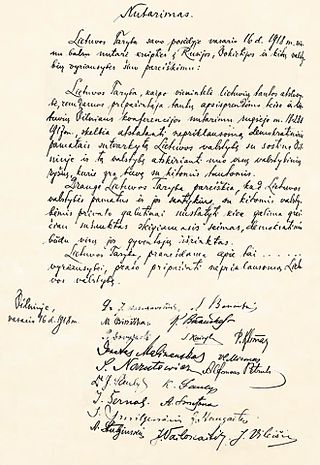
The Act of Independence of Lithuania or the Act of February 16th, also the Lithuanian Resolution on Independence, was signed by the Council of Lithuania on February 16, 1918, proclaiming the restoration of an independent State of Lithuania, governed by democratic principles, with Vilnius as its capital. The Act was signed by all twenty representatives of the Council, which was chaired by Jonas Basanavičius. The Act of February 16 was the result of a series of resolutions on the issue, including one issued by the Vilnius Conference and the Act of January 8. The path to the Act was long and complex because the German Empire exerted pressure on the Council to form an alliance. The Council had to carefully maneuver between the Germans, whose troops were present in Lithuania, and the demands of the Lithuanian people.

Lietuvos aidas is a daily newspaper in Lithuania. It was established on September 6, 1917, by Antanas Smetona, and became the semi-official voice of the newly formed Lithuanian government. When the government evacuated from Vilnius to the temporary capital, Kaunas, it ceased publication. The newspaper was revived in 1928 as the newspaper of the Lithuanian government and became the most popular newspaper in Lithuania. At its peak, it published three daily editions with combined circulation of 90,000 copies. World War II disrupted its publication. In 1990, after Lithuania declared independence from the Soviet Union, the newspaper once again became the official newspaper of the Supreme Council of the Republic of Lithuania. At the end of 1992, its circulation reached 103,000 copies. However, it was soon privatized and faced shrinking readership, financial difficulties, and other controversies. In April 2006, bankruptcy proceedings were initiated by the State Tax Inspectorate when its tax debts reached more than 4 million litas. The company was liquidated in 2015, but the newspaper continues to be published by a non-profit organization.

The Great Seimas of Vilnius was a major assembly held on December 4 and 5, 1905 in Vilnius, Lithuania, then part of the Russian Empire, largely inspired by the Russian Revolution of 1905. It was the first modern national congress in Lithuania and dealt primarily not with the social issues that sparked the revolution, but with national concerns. Over 2,000 participants took part in the Seimas. The assembly made the decision to demand wide political autonomy within the Russian Empire and achieve this by peaceful means. It is considered an important step towards the Act of Independence of Lithuania, adopted on February 16, 1918, by the Council of Lithuania, as the Seimas laid the groundwork for the establishment of an independent Lithuanian state.
The Fourth Seimas of Lithuania was the fourth parliament (Seimas) elected in Lithuania after it declared independence on 16 February 1918. The elections took place on 9 and 10 June 1936, a bit less than ten years after the Third Seimas was dissolved by President Antanas Smetona. The Seimas commenced its work on 1 September 1936. Its five-year term was cut short on 1 July 1940 when Lithuania lost its independence to the Soviet Union. It was replaced by the People's Seimas in order to legitimize the occupation. Konstantinas Šakenis was the chairman of the Seimas.
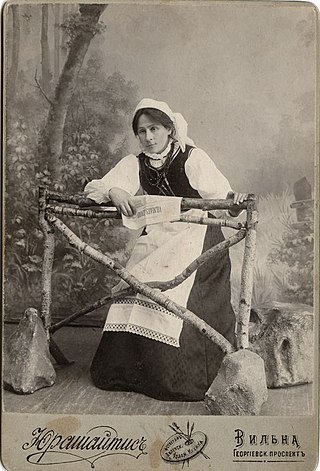
Sofija Pšibiliauskienėnée Ivanauskaitė and Marija Lastauskienė were two Lithuanian sister writers of Polish origin, using the same pen name Lazdynų Pelėda.

Liepona is a small rivulet that flows for 22.9 km (14.2 mi) on the border of Lithuania and Kaliningrad Oblast, Russia. Left tributary to Širvinta, Liepona originates in Lithuania, near Kylininkai village. In 1980, a 26-hectare (64-acre) pond for irrigation was built about 16 km (9.9 mi) from the mouth.
Tėvynės sargas was a Lithuanian-language periodical first established in 1896 in Tilsit, East Prussia during the Lithuanian press ban and the Lithuanian National Revival. It was published by the clergy and later by the Christian Democrats, thus it reflected and advocated for Roman Catholic ideals and values. Its motto was "All for Lithuania, Lithuania for Christ". With interruptions, it was published until 2000.
Tauta was a Lithuanian-language newspaper published by the Party of National Progress in Kaunas, Lithuania from 19 November 1919 to 5 November 1920. It was a four-page newspaper published once or twice a week. In total, 65 issues appeared.

The Lithuanian Nationalist Union, also known as the Nationalists, was the ruling political party in Lithuania during the authoritarian regime of President Antanas Smetona from 1926 to 1940. The party was established in 1924 but was not popular. It came to power as a result of the December 1926 military coup. From 1927 to 1939, the Council of Ministers included only members of the LTS. In 1936, other parties were officially disbanded, leaving LTS the only legal party in the country. At the end of the 1930s new members started bringing in new ideas, right wing and closer to Italian Fascism. The party was disestablished after the Soviet occupation of Lithuania in June 1940. A party of the same name was reestablished in 1990 and claims to be the successor of the interwar LTS.
Romanas Chodakauskas was the Lithuanian military attaché to Berlin, a Lithuanian Diplomat in the Ukrainian People's Republic, a Colonel in the Lithuanian Military Court, and brother of Sofija Smetonienė, Tadas Chodakauskas and Jadvyga Tūbelienė. Romanas was a member of the Chodakowski noble family.












